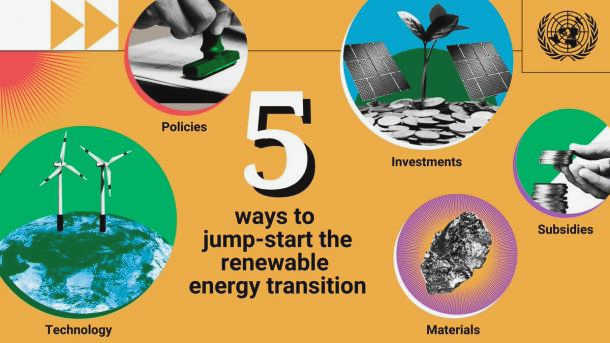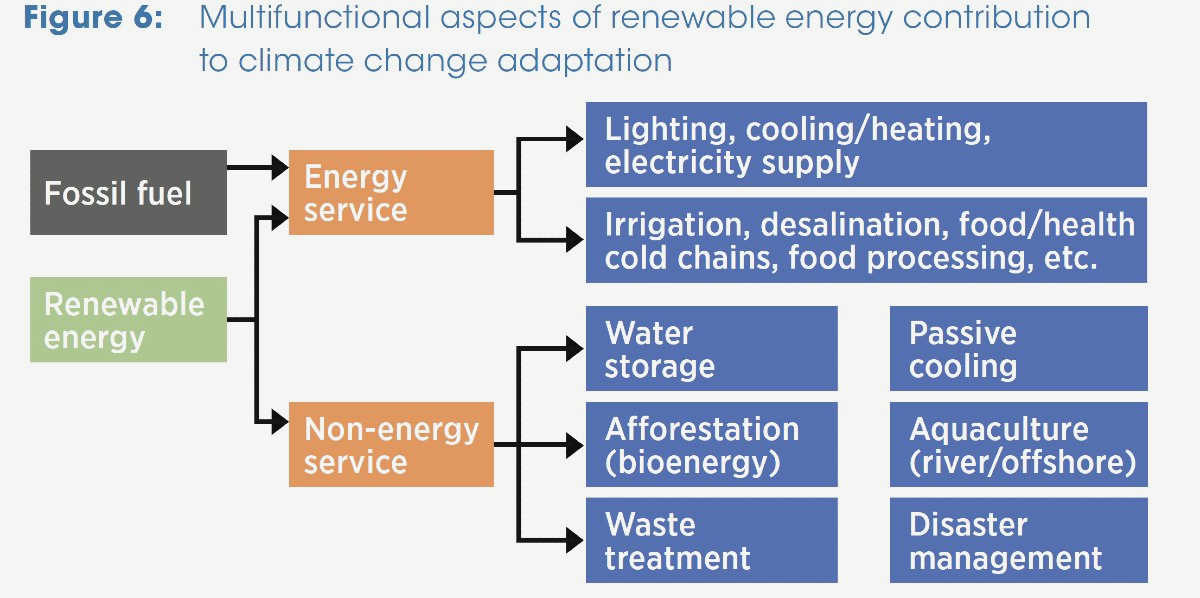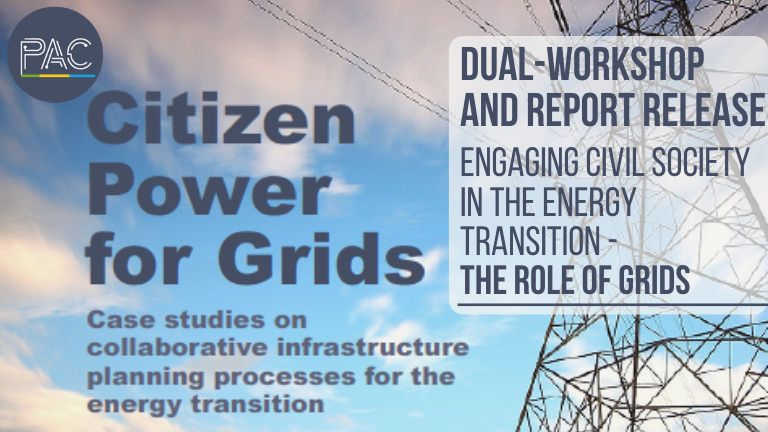Climate change is one of the most pressing issues of our time, and it requires global collaboration and action. While governments and international agreements play a crucial role in addressing climate change, civil society also has a vital part to play. Through various initiatives and projects, civil society can contribute to reducing carbon emissions and promoting sustainable development. One of the key areas where civil society can make a significant impact is in promoting renewable energy initiatives.
Renewable energy is an important solution to combat climate change as it reduces greenhouse gas emissions and dependence on fossil fuels. Civil society organizations can play a vital role in promoting and implementing renewable energy projects. These initiatives can range from advocating for policy changes to support renewable energy, to implementing community-based renewable energy projects. By harnessing the power of wind, solar, hydro, and geothermal energy, civil society can help transition to a cleaner and more sustainable energy future.
Furthermore, renewable energy initiatives also have various socio-economic benefits. They can create jobs, stimulate local economies, and improve energy access, particularly in rural areas. These initiatives can empower communities to take control of their energy production and reduce dependence on centralized power sources. Additionally, renewable energy can provide a more reliable and resilient energy supply, reducing the vulnerability of communities to power outages and price fluctuations.
Overall, civil society has a crucial role to play in addressing climate change through renewable energy initiatives. By advocating for policy changes, implementing community-based projects, and raising awareness about the benefits of renewable energy, civil society can contribute to reducing carbon emissions and promoting sustainable development on a local and global scale.
Role of Civil Society in Climate Change Mitigation
Civil society plays a crucial role in addressing climate change and mitigating its impact. In the face of this global challenge, individuals and organizations within civil society have the power to drive positive change and promote sustainable practices.
Raising Awareness
One of the key roles of civil society is to raise awareness about climate change and its causes. Through educational campaigns, grassroots movements, and social media initiatives, civil society can reach a wide audience and inform them about the urgent need to take action. By providing accurate and accessible information, civil society empowers individuals to make informed choices and adopt environmentally-friendly practices in their daily lives.
Advocacy and Policy Influence
Civil society organizations have the ability to advocate for policies that support climate change mitigation. By influencing decision-makers, lobbying for sustainable legislation, and engaging in public debates, civil society can help shape the political agenda and drive action at both local and global levels. By advocating for renewable energy initiatives, carbon pricing, and stronger regulations on greenhouse gas emissions, civil society can contribute to the transition towards a low-carbon economy.

Community Engagement and Mobilization
Civil society plays a vital role in mobilizing communities to take action on climate change. Through community-based projects, workshops, and campaigns, civil society organizations can engage with local communities and empower them to become change agents. By providing resources, organizing tree planting initiatives, and facilitating dialogue, civil society can encourage communities to adopt renewable energy practices, reduce their carbon footprint, and actively contribute to climate change mitigation efforts.
Monitoring and Accountability
Civil society acts as a watchdog, monitoring government and corporate actions related to climate change and holding them accountable for their commitments. By conducting independent research, reporting on progress, and exposing greenwashing or insufficient actions, civil society organizations play a crucial role in ensuring transparency and accountability in climate change mitigation efforts. This function strengthens the overall effectiveness of climate change initiatives and contributes to building trust between different stakeholders.
Overall, civil society’s role in climate change mitigation is multifaceted, ranging from raising awareness and advocating for policy changes to mobilizing communities and monitoring progress. By harnessing the power of collective action, civil society can significantly contribute to addressing climate change and creating a more sustainable and resilient future.
Benefits of Renewable Energy Initiatives
1. Reduction in greenhouse gas emissions
One of the key benefits of renewable energy initiatives is their ability to significantly reduce greenhouse gas emissions. Renewable energy sources such as solar, wind, and hydropower generate electricity without releasing carbon dioxide and other harmful pollutants into the atmosphere. By transitioning to renewable energy, we can mitigate the effects of climate change and work towards a more sustainable future.
2. Energy independence
Investing in renewable energy initiatives can help countries achieve greater energy independence. Unlike fossil fuels, which are often imported from other regions, renewable energy sources are typically available domestically. This reduces dependence on foreign energy sources and can enhance national security by ensuring a stable and reliable energy supply.

3. Job creation and economic growth
The transition to renewable energy can stimulate job creation and contribute to economic growth. Developing, installing, and maintaining renewable energy infrastructure requires a skilled workforce, creating employment opportunities across various sectors. Additionally, the renewable energy sector attracts investment and generates revenue, benefiting local economies and fostering innovation.

4. Improved public health
Renewable energy initiatives have the potential to improve public health by reducing air and water pollution. Unlike fossil fuel power plants, renewable energy installations do not emit harmful pollutants such as sulfur dioxide and nitrogen oxide, which can contribute to respiratory and cardiovascular diseases. By shifting towards renewable energy sources, communities can enjoy cleaner air and water, leading to better overall health and well-being.
5. Diversification of energy sources
Embracing renewable energy initiatives allows for the diversification of energy sources, reducing reliance on a single resource such as fossil fuels. This diversification enhances energy security and resilience, as it decreases vulnerability to price fluctuations and supply disruptions. By harnessing a mix of renewable energy sources, communities can ensure a more reliable and stable energy system for the future.
6. Sustainable development
Renewable energy initiatives contribute to sustainable development by addressing both environmental and social challenges. By reducing greenhouse gas emissions and promoting clean technologies, renewable energy supports the goal of fighting climate change. Additionally, these initiatives often prioritize local community engagement, fostering social cohesion and empowering individuals and communities to actively participate in the transition to a more sustainable energy system.
Global Efforts in Promoting Renewable Energy
As the threat of climate change looms over the world, there has been a global push to promote and develop renewable energy sources. Governments, international organizations, and civil society have recognized the importance of transitioning to cleaner and more sustainable forms of energy in order to mitigate the impact of global warming and reduce greenhouse gas emissions.
International Agreements:
One of the most prominent global efforts to promote renewable energy is the Paris Agreement. This landmark agreement, signed by 195 countries, aims to limit global warming to well below 2 degrees Celsius above pre-industrial levels and to pursue efforts to limit the temperature increase to 1.5 degrees Celsius. The agreement also includes provisions for countries to increase their use of renewable energy and reduce their reliance on fossil fuels.
Innovative Funding Mechanisms:
To accelerate the development and deployment of renewable energy technologies, various international financial mechanisms have been established. For example, the International Renewable Energy Agency (IRENA) provides financial support and advisory services to member countries to help them transition to renewable energy. Additionally, green bonds and impact investment funds have emerged as innovative financing tools to attract private sector investment in renewable energy projects.
Government Incentives and Policies:
To encourage the adoption of renewable energy, governments around the world have implemented various incentives and policies. These may include feed-in tariffs, tax credits, and grants for renewable energy projects. By offering financial incentives and creating a favorable regulatory environment, governments aim to attract investments and stimulate the growth of the renewable energy sector.
Collaborative Research and Development:
In order to advance renewable energy technologies and improve their efficiency, many countries and organizations are engaging in collaborative research and development initiatives. By sharing knowledge, expertise, and resources, they aim to accelerate the innovation and deployment of renewable energy technologies, making them more cost-effective and accessible.
Public Awareness and Education:
To drive widespread adoption of renewable energy, it is crucial to raise public awareness and educate communities about the benefits and feasibility of renewable energy. Civil society organizations, educational institutions, and media play a vital role in disseminating information, organizing awareness campaigns, and promoting sustainable energy practices. By empowering individuals and communities with knowledge, it becomes easier to mobilize support for renewable energy initiatives.
Conclusion:
The global efforts in promoting renewable energy are diverse and comprehensive, encompassing international agreements, financial mechanisms, government policies, collaborative research, and public awareness campaigns. These collective actions are crucial in addressing climate change and ensuring a sustainable future for generations to come.
Clean Energy Transition: Challenges and Solutions
The Challenge of Cost
One of the biggest challenges in transitioning to clean energy sources is the high initial costs associated with renewable energy technologies. While the long-term benefits of clean energy are clear, the upfront investment required can be a major barrier for many individuals and organizations. However, solutions such as government subsidies, tax incentives, and financing options can help alleviate the financial burden and make clean energy more accessible to a wider range of people.
Intermittency and Storage
An inherent challenge with renewable energy sources such as solar and wind power is their intermittent nature. The availability of sunlight and wind can vary throughout the day and across different seasons, making it difficult to rely solely on these sources for consistent energy supply. The development of efficient energy storage systems, such as improved battery technologies, is crucial to overcome this challenge. Implementing smart grids and demand response strategies can also help better manage fluctuations in energy supply and demand.
Infrastructure and Grid Integration
Another challenge in the clean energy transition is the need for significant infrastructure development and integration into existing energy grids. Building the necessary infrastructure for renewable energy generation, transmission, and distribution requires careful planning and investment. It also requires updating and adapting the existing grid infrastructure to accommodate the decentralization and variability of clean energy sources. Coordination between various stakeholders, including governments, utilities, and private companies, is essential to ensure a smooth transition.
Public Acceptance and Political Will
Public acceptance and political will play a crucial role in driving the clean energy transition. Despite the growing awareness of the need for renewable energy, there can still be resistance from certain groups or communities due to concerns about visual impacts, noise, or potential disruptions. Educating the public about the benefits of clean energy and addressing their concerns through community engagement and participation can help build support and encourage wider adoption. Additionally, strong political will and supportive policies are essential in creating an enabling environment for clean energy initiatives by providing clear regulations, incentives, and long-term planning.

International Cooperation
Addressing climate change and transitioning to clean energy requires global cooperation and collaboration. Many renewable energy sources, such as wind and solar, are not limited by national borders and their development often requires international cooperation. Sharing best practices, technology transfer, and joint research and development efforts can accelerate the clean energy transition on a global scale. International agreements, such as the Paris Agreement, provide a framework for countries to work together and set ambitious targets for reducing greenhouse gas emissions and promoting clean energy.
Conclusion
The transition to clean energy is essential for addressing climate change and achieving a sustainable future. While there are challenges to overcome, such as cost, intermittency, infrastructure, public acceptance, and international cooperation, there are also a range of solutions available. By investing in research and development, implementing supportive policies, and fostering collaboration, we can accelerate the adoption of renewable energy and create a cleaner and more resilient energy system for generations to come.
Government Policies and Support for Renewable Energy
The government plays a crucial role in promoting and supporting renewable energy initiatives. By implementing effective policies and providing financial incentives, governments can encourage the adoption of renewable energy sources and help address climate change.
Policy Framework: Governments can create a favorable policy framework that supports the growth of renewable energy. This includes setting renewable energy targets, establishing feed-in tariffs, and implementing carbon pricing mechanisms. These policies provide certainty and incentives for businesses and individuals to invest in renewable energy projects.
Financial Incentives: Governments can provide financial incentives, such as tax credits or grants, to support the development and deployment of renewable energy technologies. These incentives help reduce the upfront costs associated with installing renewable energy systems, making them more affordable for consumers and businesses.
Research and Development: Government support is crucial in driving research and development efforts in renewable energy technologies. By investing in research, governments can spur innovation and help improve the efficiency and affordability of renewable energy sources.
Collaboration and Partnerships: Governments can foster collaboration and partnerships between the public and private sectors, academia, and civil society organizations. This collaboration can lead to knowledge sharing, technology transfer, and the development of innovative solutions for renewable energy.
International Cooperation: Governments can also play a role in promoting international cooperation on renewable energy. By participating in global initiatives and agreements, governments can work together to address climate change and accelerate the transition to renewable energy on a global scale.
Regulatory Support: Governments can establish regulatory frameworks that facilitate the integration of renewable energy into the existing energy systems. This includes streamlining the permitting process, ensuring grid access, and providing regulations that promote the efficient use of renewable energy sources.
Public Awareness and Education: Government initiatives can also focus on raising public awareness and educating communities about the benefits of renewable energy. By conducting campaigns and educational programs, governments can encourage individuals to adopt renewable energy practices in their daily lives.
- Example: The government of Germany has been at the forefront of renewable energy policies, implementing the Renewable Energy Sources Act in 2000. This act established feed-in tariffs, which guarantee fixed payments for renewable energy production, creating a stable and attractive market for renewable energy investments.
Community Involvement in Renewable Energy Projects
Community involvement plays a crucial role in the success of renewable energy projects. When local residents actively participate in the development and implementation of these initiatives, it fosters a sense of ownership and responsibility, leading to greater support and commitment.
1. Education and Awareness:
One way communities can get involved in renewable energy projects is through educational campaigns and awareness programs. By providing information about the benefits of renewable energy sources and how they can contribute to mitigating climate change, community members can make informed decisions and actively support these initiatives.
2. Financing and Investment:
Another way communities can contribute is through financing and investment. Community-based funding models, such as crowdfunding or community shares, allow residents to invest directly in renewable energy projects and share the financial benefits. This not only provides necessary capital but also demonstrates a collective commitment to sustainability.
3. Collaboration and Partnerships:
Collaboration and partnerships between communities, local governments, and renewable energy developers are essential for successful projects. By working together, stakeholders can pool resources, share expertise, and address potential challenges. This collaborative approach also allows for a more localized and context-specific implementation of renewable energy initiatives.
4. Advocacy and Policy Support:
Communities can also play an important role in advocating for supportive policies and regulations that facilitate renewable energy projects. By engaging with policymakers and voicing their support for clean energy initiatives, community members can contribute to creating an enabling environment that encourages the development and adoption of renewable energy technologies.
5. Volunteering and Implementation:
Lastly, community members can actively participate in the implementation of renewable energy projects through volunteering their time and expertise. This could involve participating in the construction of solar panels, maintaining wind turbines, or organizing community events centered around renewable energy. Such involvement not only contributes to the success of the project but also strengthens social bonds and promotes a sense of community.
In conclusion, community involvement is crucial for the success of renewable energy projects. Through education, financing, collaboration, advocacy, and volunteering, communities can actively contribute to the development and implementation of sustainable energy initiatives, ultimately helping address climate change and create a more sustainable future.
Partnerships and Collaborations for Sustainable Energy
1. Government and Non-Governmental Organization Partnership:
Collaborations between governments and non-governmental organizations (NGOs) play a crucial role in promoting sustainable energy initiatives. Governments have the power to implement policies and provide funding, while NGOs bring expertise and grassroots support. Together, they can work towards creating a supportive environment for renewable energy projects and raising awareness about their importance.
2. Industry and Research Institutions Collaboration:
Partnerships between industry and research institutions are essential for the development of sustainable energy solutions. Research institutions provide scientific expertise and innovative ideas, while industries contribute financial resources and practical knowledge. By working together, they can drive technological advancements and facilitate the adoption of renewable energy sources in various sectors.
3. International Cooperation:
International cooperation is crucial for addressing climate change and promoting sustainable energy. Countries can collaborate by sharing best practices, knowledge, and resources to accelerate the transition to renewable energy. Multilateral organizations, such as the United Nations and World Bank, can facilitate these partnerships and help coordinate efforts on a global scale.
4. Public-Private Partnerships:
Public-private partnerships (PPPs) are instrumental in advancing sustainable energy initiatives. These partnerships bring together the financial resources and technical expertise of the private sector with the regulatory power and public support of governments. By leveraging the strengths of both sectors, PPPs can drive investment in renewable energy projects and promote sustainable development.
5. Community Engagement and Local Initiatives:
Engaging local communities and supporting grassroots initiatives is essential for the success of sustainable energy projects. Collaboration with community organizations, local businesses, and residents can ensure that renewable energy initiatives are culturally and socially appropriate. By involving and empowering the local population, long-term sustainability and support for renewable energy can be achieved.
Conclusion:
Partnerships and collaborations are key to accelerating the adoption of renewable energy and achieving sustainable development goals. Through government and NGO partnerships, industry and research institution collaborations, international cooperation, public-private partnerships, and community engagement, we can address climate change and create a more sustainable future for all. The collective efforts of various stakeholders will be essential in driving the transition to renewable energy and mitigating the impacts of climate change.
Renewable Energy Technologies and Innovations
Renewable energy technologies and innovations are playing a crucial role in addressing climate change and reducing the world‘s dependency on fossil fuels. These technologies harness the power of natural resources such as sunlight, wind, and water to generate clean and sustainable energy.
One of the most widely adopted renewable energy technologies is solar power. Solar panels convert sunlight into electricity through the photovoltaic effect. This technology has become increasingly efficient and affordable over the years, making it a popular choice for both residential and commercial use. Additionally, innovations in solar power include the development of solar-powered batteries that store excess energy for use during periods of low sunlight, ensuring a continuous power supply.
Another renewable energy technology that has gained significant attention is wind power. Wind turbines harness the energy from the wind and convert it into electricity. Advances in wind turbine design, such as the use of larger blades and improved turbine efficiency, have significantly increased the capacity and effectiveness of wind power. Additionally, innovations in offshore wind farms have allowed for the installation of turbines in deeper waters, further expanding the potential of wind energy.
Hydropower
Hydropower is another renewable energy technology that utilizes the power of water to generate electricity. It involves the capture and utilization of the energy from flowing or falling water. Large-scale hydropower plants typically feature dams that store water and release it through turbines to generate electricity. However, innovations in hydropower include the development of smaller-scale hydroelectric systems, such as run-of-river systems and tidal turbines, which have lower environmental impact and can be installed in more diverse locations.
Geothermal Energy
Geothermal energy taps into the natural heat of the Earth to generate electricity. This renewable energy technology relies on the heat stored within the Earth’s crust, which is accessed through geothermal power plants. These plants utilize steam or hot water to drive turbines and generate electricity. Innovations in geothermal energy include the use of enhanced geothermal systems, where heat is extracted from deeper underground by creating artificial fractures. This technology has the potential to greatly expand the availability of geothermal energy resources.
In conclusion, renewable energy technologies and innovations are essential for addressing climate change and transitioning to a more sustainable energy future. Solar power, wind power, hydropower, and geothermal energy are just a few of the many renewable energy sources that are driving this transition. Continued research and development in these fields will further enhance the efficiency, affordability, and accessibility of renewable energy, paving the way for a cleaner and greener world.
Economic Opportunities in the Renewable Energy Sector
The renewable energy sector presents diverse economic opportunities for governments, communities, and individuals. By investing in renewable energy initiatives, countries can create new jobs, boost local economies, and reduce dependency on fossil fuels. This transition to clean energy sources offers numerous benefits for both developed and developing nations.
Job Creation: The renewable energy sector is a major source of job creation. As countries strive to reduce greenhouse gas emissions and meet their climate targets, they need skilled workers to design, install, and maintain renewable energy systems. This industry offers employment opportunities for engineers, technicians, project managers, and other professionals with expertise in renewable energy technologies.
Local Economic Growth: Renewable energy projects can stimulate local economies by attracting investments, generating revenue, and increasing the value of surrounding properties. When governments invest in clean energy infrastructure, they create demand for materials and services, benefiting local suppliers and businesses. Additionally, renewable energy projects often require construction and maintenance work, which can provide opportunities for local contractors and service providers.
Technological Innovation: The renewable energy sector drives technological innovation, leading to new advancements and breakthroughs. As countries invest in renewable energy research and development, they foster innovation in areas such as solar power, wind energy, and energy storage. This innovation not only contributes to the growth of the renewable energy sector but also creates opportunities for technology companies and startups to develop and commercialize clean energy technologies.
Export Potential: Developing a strong renewable energy sector can also open up export opportunities for countries. As demand for clean energy technologies grows worldwide, countries with advanced renewable energy industries can export their expertise and products. This includes not only renewable energy equipment but also knowledge and technical skills. The export of renewable energy technologies can boost a country’s trade balance and help diversify its economy.
Investment Attraction: The shift towards renewable energy has attracted significant investment from both public and private sectors. Investors recognize the potential for high returns on investment in renewable energy projects and are increasingly putting their money into this sector. This influx of capital can spur economic growth, create more job opportunities, and drive technological innovation, further strengthening the renewable energy sector.





